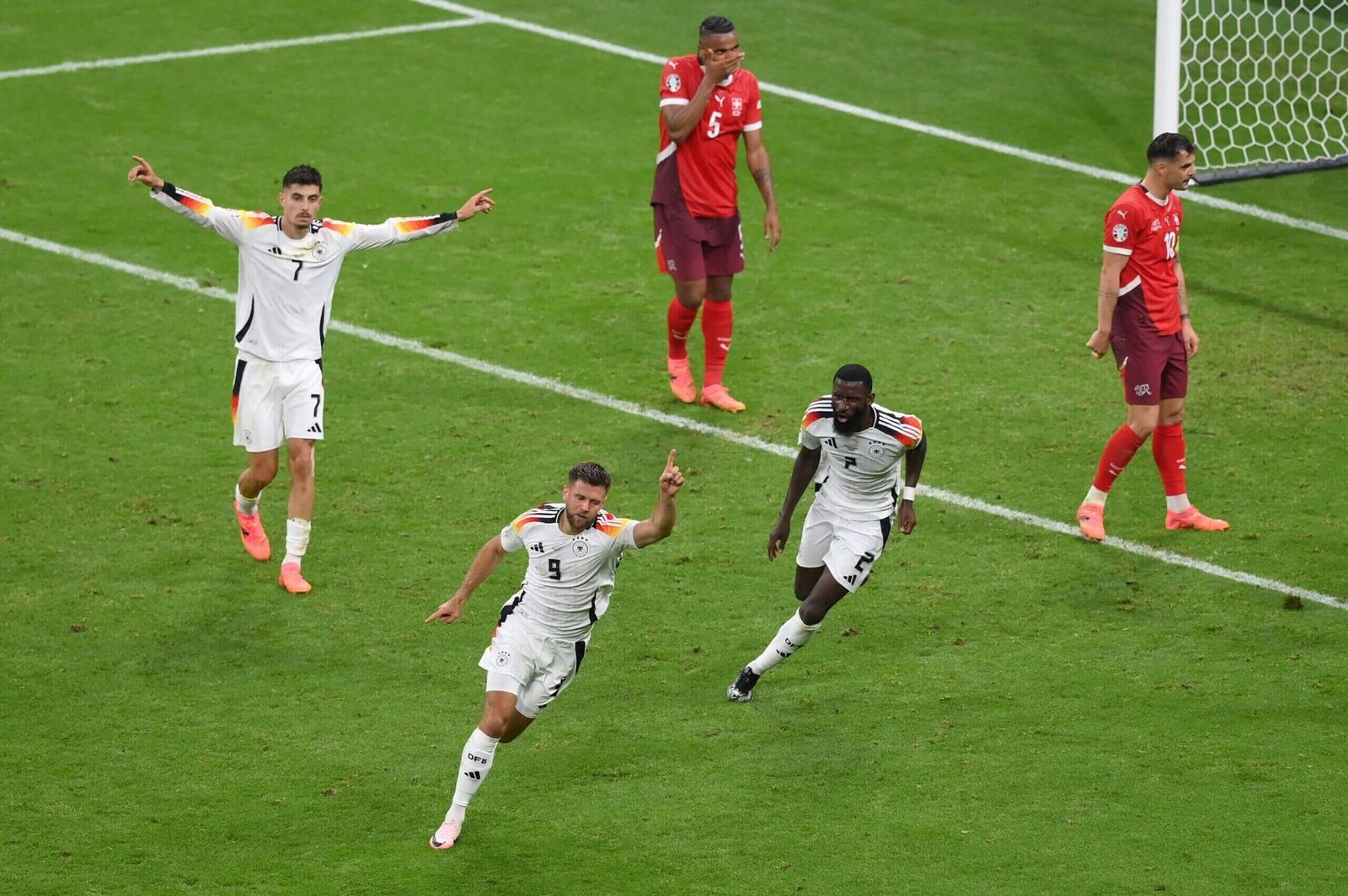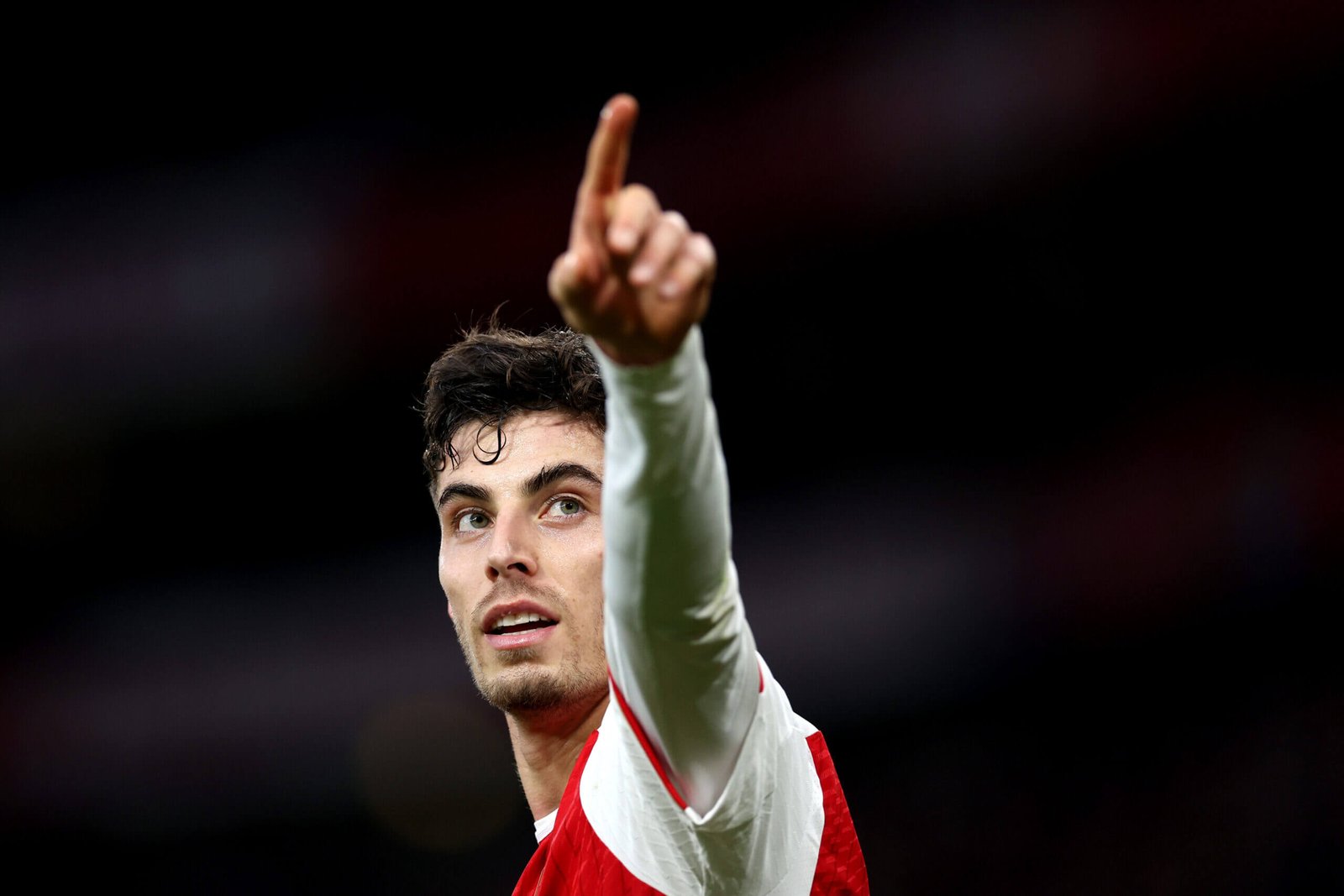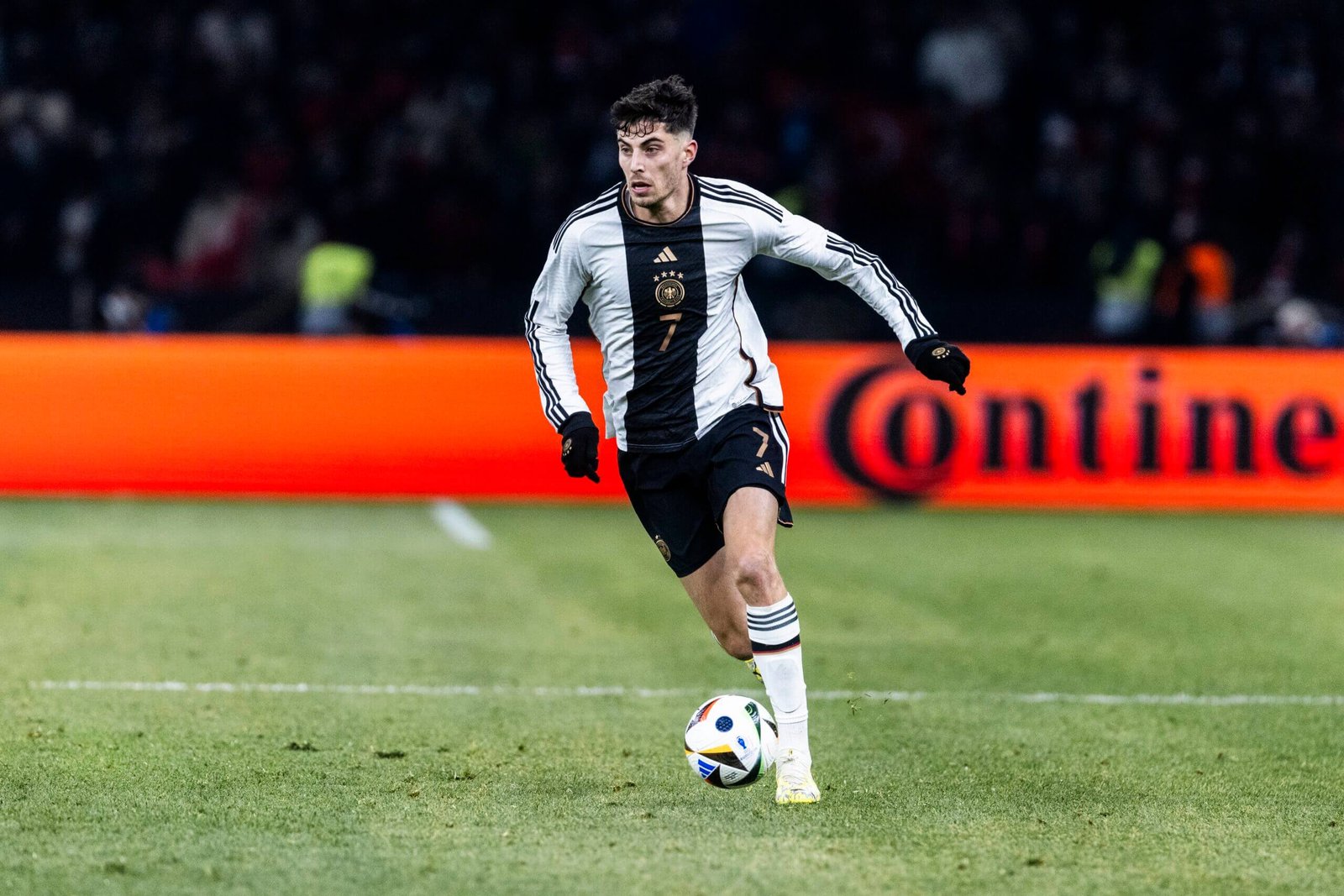Kai Havertz is a riddle of a footballer.
From the moment he first appeared on a Bundesliga pitch for Bayer Leverkusen in 2016, as the club’s youngest-ever player in the competition’s history, Havertz has been expected to become a star.
For much of the time since, particularly since leaving Germany in 2020, he has been treated as a problem to solve — something to decode. Chelsea never seemed to know quite what to do with him. Nor, initially at least, did Arsenal. Even at this European Championship, with Germany heading for a quarter-final against Spain on Friday, Havertz remains at the heart of a culture war.
He has his supporters. He has his critics. Two factions divided by one issue.
What does Kai Havertz actually do?
He has a strange role for Germany. Literally and figuratively.
He is the centrepiece of Julian Nagelsmann’s attack. Germany’s system incorporates three narrow No 10s (Florian Wirtz and Jamal Musiala either side of captain Ilkay Gundogan) behind Havertz, but their offensive structure is much more fluid, often with four or five players strung out across the width of the pitch, changing positions and rotating roles.
It’s more helpful to think of that group as a whole, rather than as individuals. At the beginning of the tournament, The Athletic asked Musiala what it was that he enjoyed about playing within that attacking group, particularly with Wirtz and Havertz.
“I think we all have the same football ideas,” he said. “We can all create something. Kai is a goal threat up front, but we can combine with him and he can drop deep and play in the 10 role too. There is lots of variety in our attack which I really like.”
When Nagelsmann’s attack fires, Havertz’s movement, selflessness and vision are saluted for helping to make things tick. When that happens, everybody appreciates the subtlety of his contribution, and his value to the group.
But as soon as the attack stutters, Havertz is singled out and the clamour begins for Nagelsmann to pick a more orthodox forward.
So it was after the 1-1 draw with Switzerland. Niclas Fullkrug’s stoppage-time header brought Germany level after a disappointing performance. It was his second goal of the tournament and, in the days after, the German sports media wondered aloud whether he, not Havertz, should start the game against Denmark.
Fullkrug is a better story than Havertz. Now 31, he has spent much of his career between Germany’s top two divisions. He had to wait until his late twenties just to play international football and he has trodden a weather-beaten path to get here.

(Justin Setterfield/Getty Images)
It creates a difficult comparison for Havertz. He was the teenage prodigy. His virtues are much more ethereal. Hardest of all, he does not score a lot of goals from open play. At Euro 2024, only Cristiano Ronaldo (15) has taken more non-penalty shots than Havertz (12). Neither have scored from those attempts.
The yearning for Fullkrug is quite understandable — even Nagelsmann accepts that.
“If you look at it from the outside,” he said before the win over Denmark in Dortmund, “then the demand for Fulle is understandable. But Kai has such an important job in many games. Because he has to create space for others, it means that he doesn’t get many actions on the ball. He did that exceptionally well. Internally, we rank Kai much higher than the public.”
Off-ball movement will never replace goals as a striker’s currency, but Havertz is disruptive. Only Erling Haaland made more off-ball runs than him in the 2022-23 Premier League season. His goal for Chelsea in the 2021 Champions League exemplified the frequent quality of those runs, and ability to attack the space behind a high line. Currently, those same runs give Germany’s centre-backs an out ball if midfield options are limited, and prevents opposing defences from pushing up too far.
Kai Havertz winning the Champions League… 🎥#UCL pic.twitter.com/33Cu8SSws9
— UEFA Champions League (@ChampionsLeague) June 28, 2023
Havertz is typically isolated in analysis, beaten with the stick of underperformance relative to expected goals (though not last season). He is something of a striker’s striker. In each of the last three seasons, Arsenal (2023-24) and Chelsea (2022-23 and 2021-22) have posted better win rates and goals per game when Havertz starts than without him. His flexibility means he can play with such a variety of attacking profiles.
But this issue has also been created by the pattern of Havertz’s career. At each of its stages, a different version of him seems to have existed. Between his time at Leverkusen, Chelsea and now Arsenal, contrasting iterations of Kai Havertz have appeared and been argued over.
Havertz was one of the talents of his generation. He won two Fritz Walter Medals (awarded by the German Football Association to outstanding youth players in age group categories) — silver in 2016, gold in 2018 — and was first called up to play for Germany when he was 19. Digitally, he has been a star for longer, having become known as a blue-chip prospect in the Football Manager series.
He made his senior breakthrough at Leverkusen in 2016, when he was more a bundle of attributes than a player moulded for a position. Over the next four seasons, until 2020, he never really acquired a positional label. He occupied different roles in a variety of formations. He was a centre-forward, a wide forward, a No 10. In his best statistical season, he operated as a No 8 in Peter Bosz’s ultra-aggressive 3-4-3.

(HASAN BRATIC/AFP via Getty Images)
Havertz was typical of the type of player Germany was producing at the time. In the modern day, that is often described as a problem. One of the ideological concerns in the country is that, despite being able to produce multi-skilled, multi-positional players by the dozen, the art of creating specialists — centre-forwards, centre-backs — appears to have diminished.
In 2020, Havertz joined Chelsea in a circumstantial transfer.
At that time he had become one of the most in-demand players in Europe and was destined to leave Leverkusen that summer. That February, however, the coronavirus pandemic destroyed football’s finances and deflated the transfer market.
Chelsea had carried a long-term interest in Havertz and were one of the few clubs who were able to keep spending. Hakim Ziyech was signed from Ajax. Timo Werner joined from RB Leipzig. The previous season, academy prospects Tammy Abraham and Mason Mount had made significant strides in the first team and, collectively, that group of players appeared to occupy Havertz’s preferred positions.
But while he had no obvious role, the opportunity to sign him — with little competition — was too compelling.
It began a nebulous period. He initially joined a club under the short-term guidance of Frank Lampard. When Thomas Tuchel was appointed to replace Lampard in January 2021, it started what was probably the best period of Havertz’s Chelsea career — but the positional rotation continued. He was used as a pressing forward or as one of the two No 10s behind a No 9.
Still, without a regular role, he remained difficult to classify — even for those coaching him.
In March 2022, following a 4-0 win over Burnley in which Havertz had scored twice, having again been selected ahead of Romelu Lukaku, Tuchel was asked to explain his decision and what it was that he saw in the German.
“What he gives us is huge volume,” he said. “He covers a lot of metres, he covers a lot of metres in high intensity, so he finds the intensity no matter what the system the opponent defends against us. He finds intensive runs. He finds distances.
“He loves to create overloads and half-spaces and this is what he gives. It’s just his style of play, his characteristic as a player.”

(Lewis Storey/Getty Images)
It’s the kind of answer that requires a coaching certificate to understand. It also typifies the vague discourse that tends to exist around Havertz.
In the abstract sense, it is remarkably similar to the conversation happening now, at Euro 2024. Fullkrug is goals. Havertz is massive volume.
“I love him. I think we all love him as a player and as a person, everything that he brings to the team… you ask him to play as a nine, as a right attacking midfielder, left attacking midfielder, on the base defending and he does it. He’s just a joy to work with.”
In the middle of February 2024, Mikel Arteta had just watched his Arsenal side beat West Ham away from home. Arsenal were devastating and Havertz was individually excellent. He did not score, nor did he assist, but his performance was measured and simple; as Arteta’s effusive praise suggested, he provided exactly what the team needed.
Arsenal did have a plan for Havertz. The signing of Declan Rice allowed Arteta the chance to rebuild his midfield, and for Havertz to play as a left-sided No 8, the role he had filled for Bosz in Leverkusen.
Initially it was difficult. Havertz was inhibited in his passing and reluctant to take risks with the ball. His misfit reputation at Chelsea had him playing to tough crowds, too, with opposing fans mocking his £60million ($76m) transfer fee. Internally, Arsenal were more impressed with his movement and his defensive contribution than they had expected to be, but his demeanor was that of a player destabilised by his experiences in England.

(Richard Heathcote/Getty Images)
In the autumn of 2023, Arteta still seemed befuddled by the Rubik’s Cube; the idea of Havertz was more compelling than the reality. By the end of the season, though, Havertz had produced by far his best statistical performance in a Premier League season, and his best anywhere since 2019.
Ange Postecoglou, the Tottenham head coach, is working as a pundit for ITV during the European Championship. Describing what has made Havertz successful at Arsenal — and what has allowed the player to suit their style of play — Postecoglou drew on his experience of facing Arteta’s side, and the German in particular.
“A lot of his work is about creating space for others. When you play Arsenal… they don’t have this focal point where you can say we will shut down this area. They have got so much movement, and he is their catalyst to that.”
Reflecting on why it is that Havertz remains so divisive, Postecoglou raised a familiar issue:
“I think with Havertz, he is one of those players where, because (fans) can’t pigeonhole him into one position, they struggle to find ways to kind of judge his contribution.”
For Nagelsmann, Germany and Kai Havertz, things got worse before they started to get better.
Running parallel to Havertz’s re-emergence at Arsenal was a curious period during which he was — essentially — a casualty of the chaos that followed Hansi Flick’s dismissal as national team head coach.
Back in November 2023, two months into his tenure as Flick’s successor, Nagelsmann made the decision to employ Havertz as a left-back in friendlies against Austria and Turkey. It was parodied and treated as indicative of Germany’s dysfunction.
They lost both games with no sign of the evolution that would follow.
Nagelsmann had been willing to contort his team just to accommodate Havertz. He was even prepared to give him an entirely new position. Speaking before the game against Austria, he explained his reason in a way that suggested that even he was not entirely sure where the experiment was headed.
“We have different formations depending on how high the opponent’s line is. Kai won’t always be in that position. I have so many ideas for him because he is an exceptionally good footballer. It’s a really good option for us. He won’t always play as the classic left-back that you might know.”

(Mika Volkmann/Getty Images)
After that defeat to Austria, Nagelsmann sounded like a coach who knew he had to include a player, but who did not really know how to do it. Havertz, too, was curiously receptive to a trial-by-fire experiment that involved him learning an entirely new position, in a brand new team, just seven months out from a home European Championship.
“Kai said he wanted to do it and wanted to try it,” Nagelsmann explained at the time, “and I don’t see this as a risk for him, but as a very, very big opportunity to play a key role at the Euros.”
It’s a strange anecdote, but also a perfect one — another instance of Kai Havertz the footballer, rather than the attacking midfielder, the centre-forward or the shadow striker. That a player of his standing, who has cost a cumulative €200million in transfer fees, was willing to try that role suggests that even Havertz himself was not entirely sure of where on the pitch he belonged.
Like his difficult start at Arsenal, perhaps that too was a legacy of the last few years and a product of being a player without a true place on the pitch.
That changed in March. It was in the spring internationals against France and the Netherlands that Nagelsmann first started Havertz in front of Wirtz and Musiala. The chemistry was quick and obvious, even if the explanation for why was not; Havertz’s role for his country is to be wherever in the attack he is needed at any given time.
Germany’s impact at this tournament is being felt in more than just their progress. Musiala is coming close to being a national hero. Antonio Rudiger has never been more popular. Toni Kroos is venerated wherever he goes. German flags are flying from car windows and tower blocks. It’s that kind of summer — and the further this team goes, the more uninhibited the euphoria will become.
Germany have often been deeply disappointing over the past decade and these players are helping to restore a country’s football ego. In a sporting sense, that always delivers a certain type of immortality.
Whether Havertz would be embraced in the same way remains to be seen. He is treasured by those who coach him and those who play with him. Whether the soft sell of his broad, intricate talent can ever resonate beyond that is another issue.
What does Kai Havertz do? Whatever it is, it seems to matter.
(Additional contributor: Jordan Campbell and Liam Twomey)
(Boris Streubel – UEFA/UEFA via Getty Images)
Read the full article here


